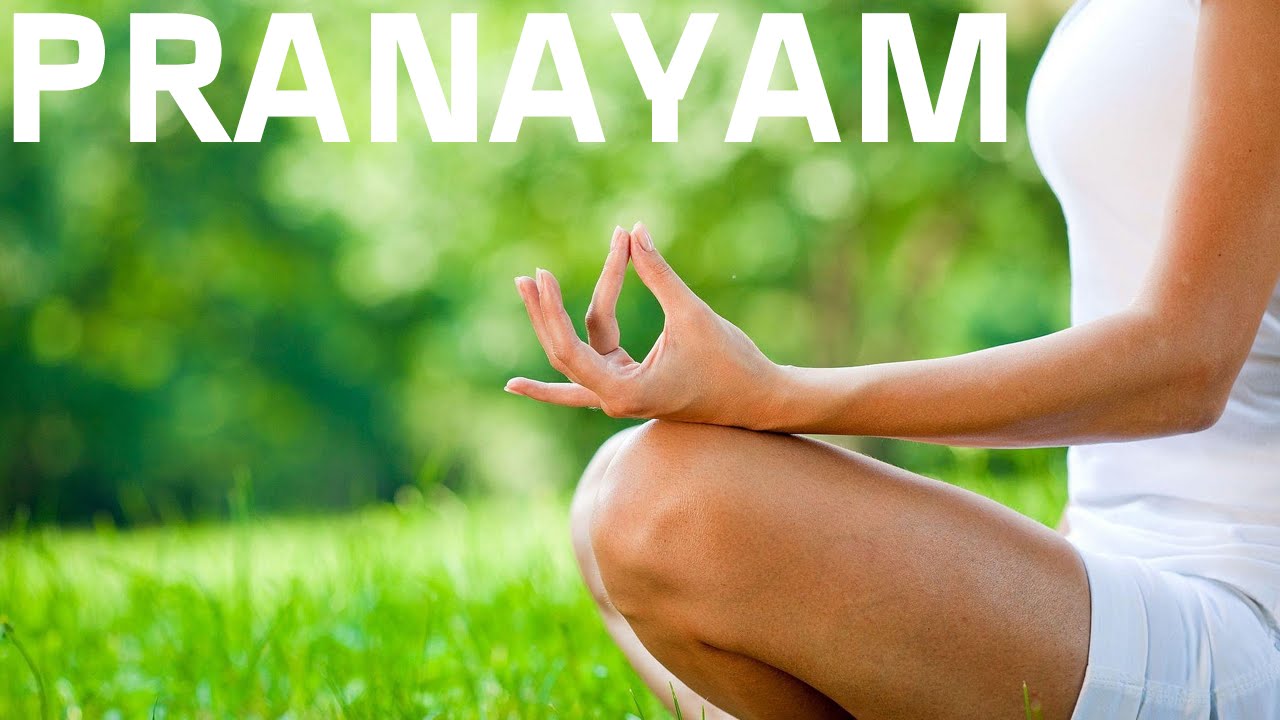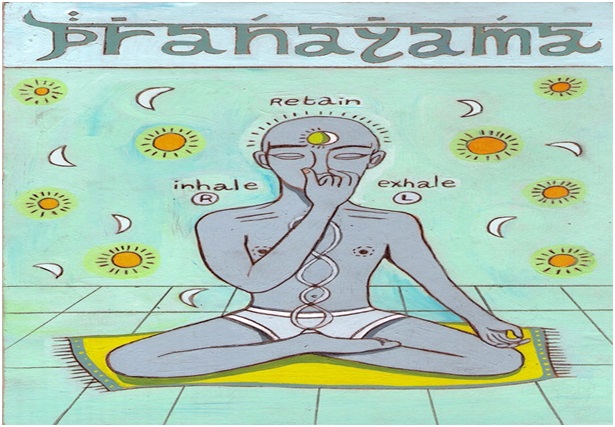Athaasane dridhe yogee vashee hitmitaashanaha.
Guroopadishtamaargena praanaayamaansamabhyest.
Translation: Thus being established in asana and having control (of the body), taking a balanced diet, pranayamas should be practiced according to the instructions of the Guru.
-Hatha Yoga Pradipika (2:1)
Pranayama is more than simple breathing exercises and it must be practiced systematically under proper guidance. Prana is the vital force and Pranayama is the process by which the internal pranic store is increased. Thus Pranayama is the exercise or the process for increasing the Vital force energy or the energy that adds life to us. It is not merely breathe control but a technique through which the quantity of Prana in the body is activated to higher frequency. Sage Patanjali (Father of Yoga) defines Pranayama as the gap between inhalation and exhalation.
Looking at the most gross level of pranayama is it increases the lung capacity, so every time you inhale you take in more oxygen, so more inhaled oxygen means more the blood carries more oxygen and thus other body organs gets treated with more oxygen which keeps them healthy and in excellent working position. Most importantly more oxygen reaches to the brain giving good memory and anti aging effect. Thus Pranayama is not merely a breathing exercise; it is a technique where one can go beyond their normal boundaries to attain a higher state of energy and awareness.
Four aspects of Pranayama:
In Pranayama practice there are 4 important aspects:
1. Inhalation (puraka) – controlling the intake of air, keeping it smooth and efficient.
2. Exhalation (recaka) – stresses on controlling the expelling of air from lungs.
3. Internal Breathe Retention (antara kumbhaka) – focuses on controlling the retention of air within lungs after an inhalation.
4. External Breathe Retention (bahya kumbhaka) – emphasizes on controlling the retention of empty lungs after an exhalation.
The most important aspect is retention. But in order to perform the retention there must be a gradual development in Pranayama practice. Therefore in Pranayama in the beginning more emphasis is put on inhalations and exhalations in order to strengthen lung capacity and balance the nervous system to prepare oneself for retentions.
Benefits of Pranayama
- By breathing deeply and completely emptying the lungs, far less of stale air and carbon dioxide remains in the lungs improving the effectiveness of each breath.
- Pranayama brings awareness to the normally subconscious activity of breathing to make it more efficient and balance the oxygen, carbon dioxide and other soluble gas levels in the blood.
- It helps in greater mental control which further helps to bring emotional balance and mental clarity.
- It increases the capacity of lungs, reduces blood pressure and improves digestion.
- Improves contretation
- If practices daily for a long period, the becomes light and energetic and mind becomes calm and peaceful.
- Pranayama ventilates all areas of lungs and increases capacity and elasticity. It strengthens the muscles of the respiratory system.
- It gently massages heart and abdominal viscera.
- Rhythmic breathing contributes relaxation of both mind and body and helps to release tension.
- Aids in getting rid of toxins in the body. It helps to clean the dust and dirt in the nasal and lung passages and respiratory tract.
Breath, health and Pranayama
The breath is the most vital process of the body as it influences the activity of each and every cell in the body. Human being on an average breathes about 15 breaths per minute and 21,600 times per day. Respiration fuels the burning if oxygen and glucose producing energy to power every muscular contaction, glandular secretion and mental process. And thus even during yogasanas (yoga postures) inhalations and exhalations are primary instructions.
Most people breathe incorrectly, using only a small part of their lung capacity, depriving the body of oxygen. Rhythemic, deep and slow respiration stimulates calmness of mind. Irregular breathing disrupts the rhythms of the brain inviting physical, mental and emotional blocks. Pranayama establishes regular breathing pattern breaking the negative effect.
Although breathing is mainly unconscious process, conscious control of it helps reversing the mental patterns and brings the mind in a state of joy. In addition in increasing the quality of life, it even helps enhancing quantity of life. The ancient yogis studied nature in great detail. They noticed that animals ith slow breath rate such as Pythons, elephants and tortoises have long life span, where as those with fast breathe rate such as birds, dog, rabbit, etc., live only for few years. Thus Pranayama results in less number of breaths per minute increasing out longevity.
In my next article, I will jot down few general notes for practitioners and few breathing techniques that can be practiced at home 🙂






